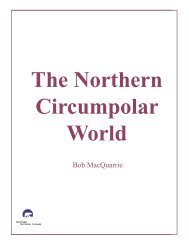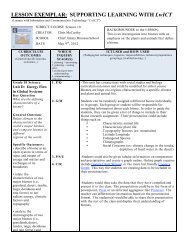Figure 4.9 This painting, <strong>The</strong> Ambassadors, was painted in 1533 by Hans Holbein the Younger (1497-1543). <strong>The</strong> objects in thepainting show some of the advances made during the Renaissance. Inventions include a sextant and astrolabe, navigationinstruments that allowed sailors <strong>to</strong> travel the world’s oceans. Books show how new ideas could be spread <strong>to</strong> everyone. <strong>The</strong>globes show how knowledge of the world was growing. <strong>The</strong> carpets on the floor and table reflect the ongoing trade betweenEurope and East Asia.<strong>The</strong> power of the ChurchIn the mid-1500s, most <strong>Europeans</strong> followedone of two Christian traditions. RomanCatholics followed the traditional teachingsof the Roman Catholic Church. In the early1500s, some people had disagreed with theCatholic Church and formed their owngroup, known as the Protestants (becausethey had protested some of the CatholicChurch’s main teachings). This was important<strong>to</strong> exploration, because the Catholicpopes made decisions about who couldclaim what lands in the New World.Throughout Europe, countries such asFrance, Spain, and Portugal remained Catholic.Other countries such as England and theNetherlands followed the Protestant faith.<strong>The</strong> <strong>Europeans</strong> <strong>Come</strong> <strong>to</strong> <strong>North</strong> <strong>America</strong> 59
<strong>The</strong> EmpiresDuring the Renaissance, kings and queenshired explorers and crews <strong>to</strong> expand theirempires, or the lands they controlled allover the world. <strong>The</strong>y competed for newlands, slaves, trade routes, and preciousgoods like spices and gold. <strong>The</strong>y also wanted<strong>to</strong> spread their religions <strong>to</strong> people in newlands. <strong>The</strong> public loved <strong>to</strong> hear about exoticplaces, and many explorers wrote s<strong>to</strong>riesbased on their experiences. Becausesensational s<strong>to</strong>ries sold, some explorerseven altered their adventures <strong>to</strong> includes<strong>to</strong>ries of fantastical people.Sometimes, explorers made their tripssound more successful than they were. Bydoing this, many got sponsors <strong>to</strong> fund theirexpeditions. One explorer, for example,reported that the Aboriginal peoples of<strong>North</strong> <strong>America</strong> were Chinese. Others wrotethat they had found a river in <strong>North</strong> <strong>America</strong>that would take them <strong>to</strong> the Pacific andacross Asia. In truth, no one had any ideahow wide <strong>North</strong> <strong>America</strong> was, and theearliest maps often show coastline witha rather skinny strip of land (see p. 64).Figure 4.10 Chris<strong>to</strong>pher Columbus travelled <strong>to</strong> Spain <strong>to</strong> findbacking for his travels. King Ferdinand and Queen Isabellawere eager <strong>to</strong> find a way <strong>to</strong> the riches of Asia and so fundedColumbus’s expeditions <strong>to</strong> search for a passage <strong>to</strong> Asia.At first, the search for a <strong>North</strong>westPassage was the reason for much of early<strong>North</strong> <strong>America</strong>n exploration. Soon, however,explorers began <strong>to</strong> realize the enormous sizeof <strong>North</strong> <strong>America</strong>. <strong>The</strong>y knew it would beboth costly and difficult <strong>to</strong> find a way aroundor through the continent. At about the sametime, they also discovered new riches onthe lands that they were exploring. Gold andsilver from South and Central <strong>America</strong>, andluxurious furs from <strong>North</strong> <strong>America</strong> would bevaluable goods in Europe.Explorers began claiming more andmore land for the rulers of the countriessponsoring their expeditions. In turn, therulers started <strong>to</strong> plan colonies in thesenewly claimed lands. <strong>The</strong>y wanted <strong>to</strong> makesure they could control both the peopleand the riches they found there.Some of the countries that exploredduring this period of exploration arediscussed below.PortugalOne of the first people <strong>to</strong> finance explorationsduring this time was Henry the Naviga<strong>to</strong>r,the king of Portugal. During the 1430s,he founded a court <strong>to</strong> which he invitedEurope’s best car<strong>to</strong>graphers (mapmakers),shipbuilders, astronomers, instrumentmakers, and sailors. Portugal, located onthe Atlantic Ocean, was active in explorationduring the 1400s and 1500s.SpainEager <strong>to</strong> find a way <strong>to</strong> the riches of Asia,the royal court of Spain sponsored manyexpeditions <strong>to</strong> search for a passage <strong>to</strong> the East.When the Spaniards found gold and silver inSouth <strong>America</strong> and Central <strong>America</strong>, they60 People and S<strong>to</strong>ries of Canada <strong>to</strong> 1867 • Chapter 4
















